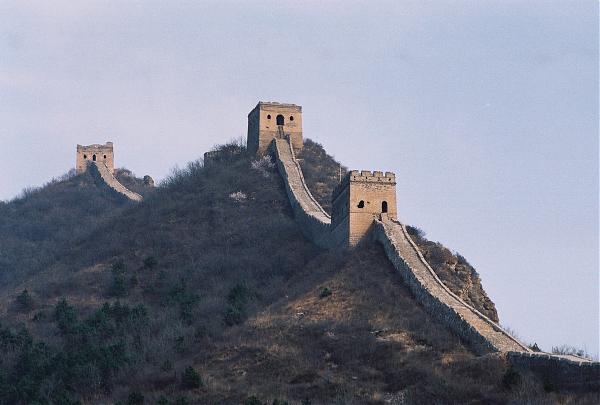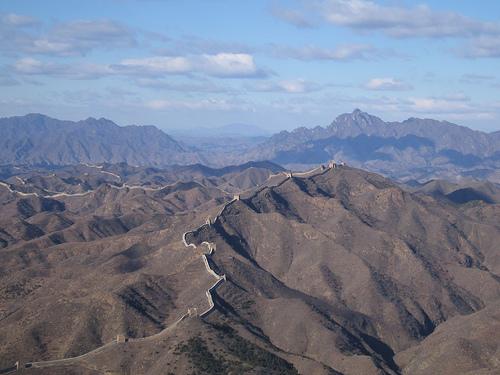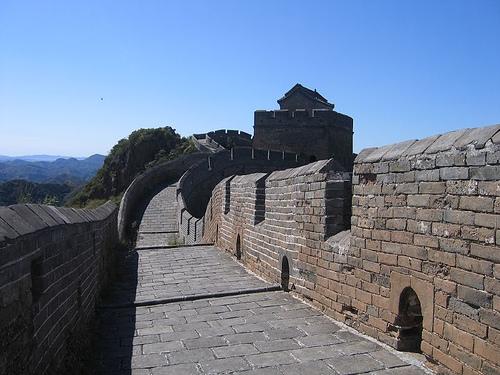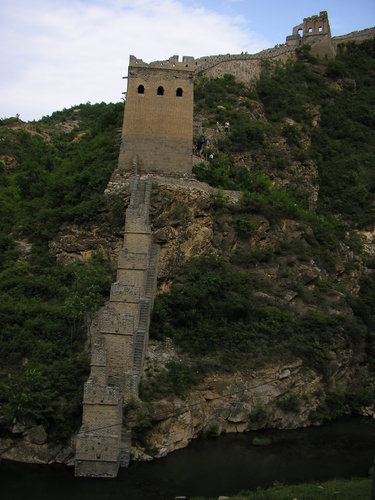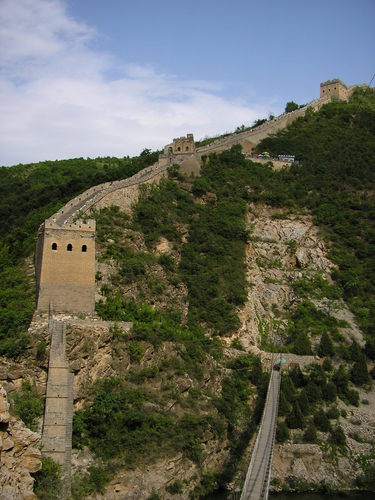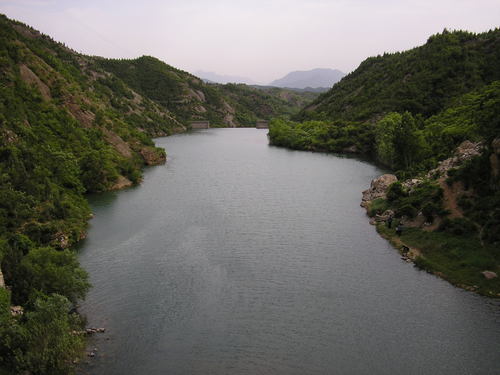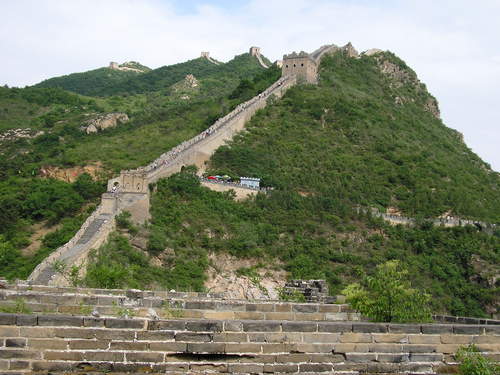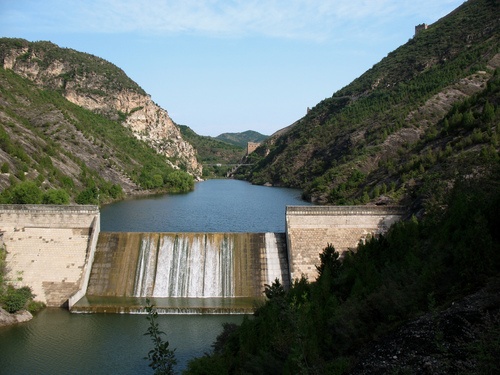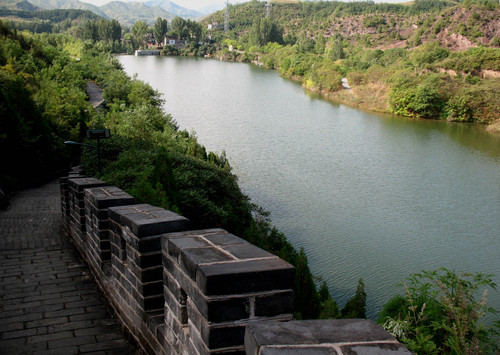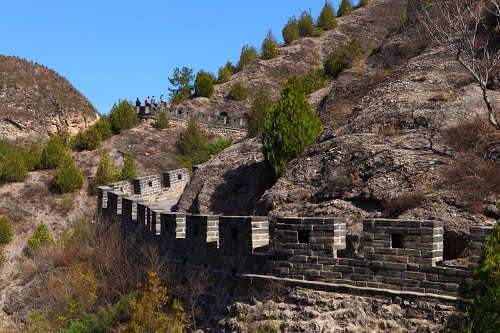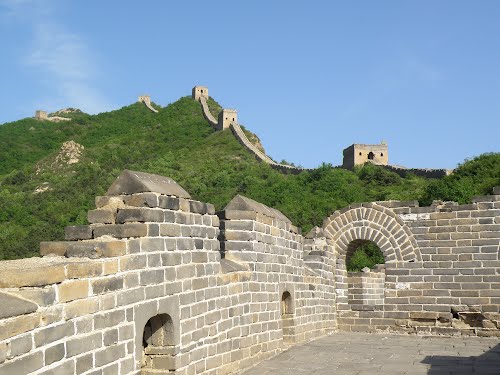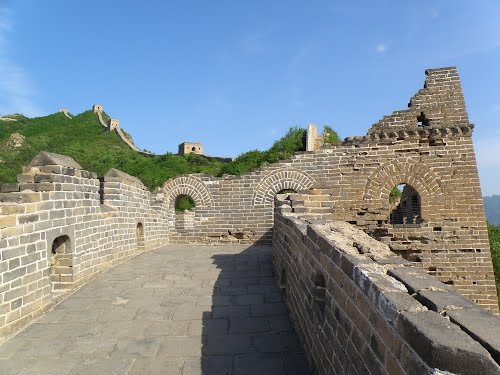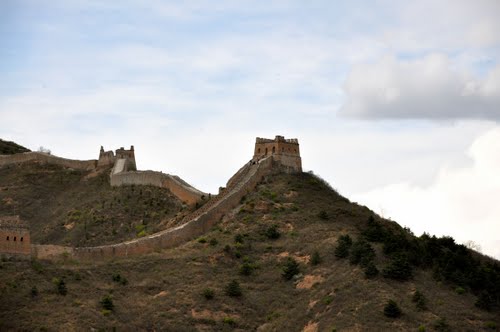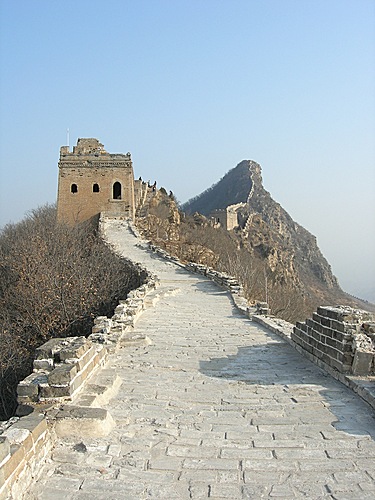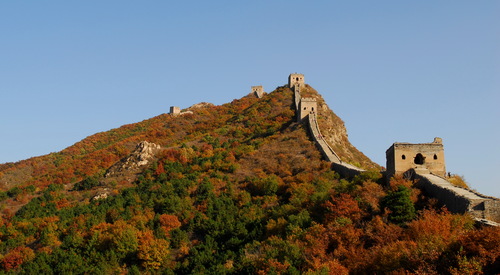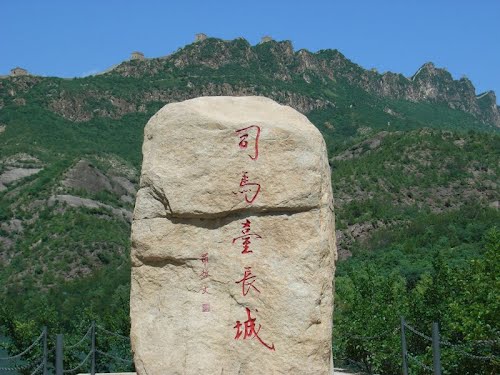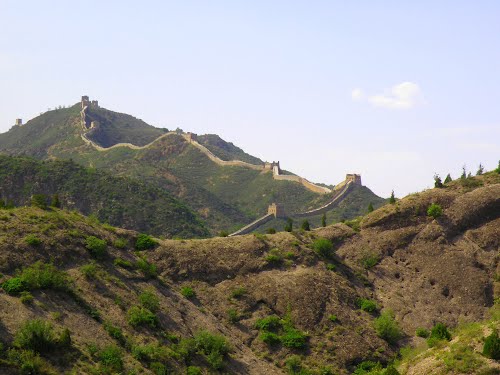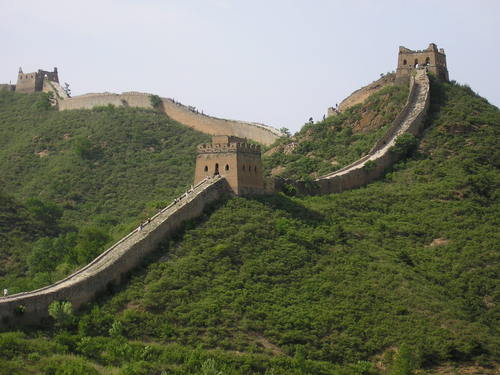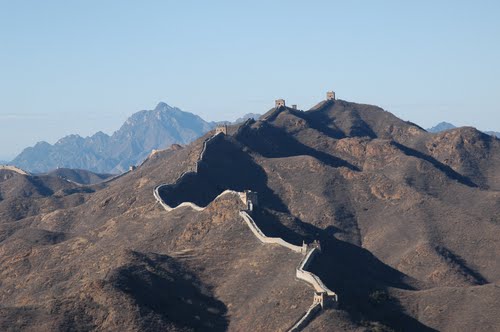Simatai, a section of the Great Wall of China located in the north of Miyun County, 120 km northeast of Beijing, holds the access to Gubeikou, a strategic pass in the eastern part of the Great Wall. It was closed in June 2010 but has been reopened to tourists in 2014.
General
Originally built during the Northern Qi dynasty (550–577) and rebuilt in the Hongwu years of the Ming dynasty.
Simatai Great Wall is 5.4 km long with 35 beacon towers. This section of the Great Wall incorporated the different characteristics of each section of the Great Wall. UNESCO has designated Simatai Great Wall as one of the World Cultural Heritage Sites as part of the Great Wall World Heritage Site.
Simatai Great Wall is separated by a valley into eastern and western parts. The western part appears gentle with 20 well-preserved watchtowers dotting along the wall. The eastern part is much steeper, following more rugged terrain that includes cliff edges and kilometre-high peaks.
Hanging precariously onto the Yanshan Mountain, Simatai Great Wall is known for its steepness. Open Air Gondolas provide a way to ascend partway up the wall. The 17 watchtowers are relatively closely spaced and provide spectacular views.


